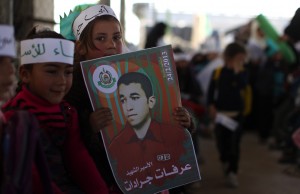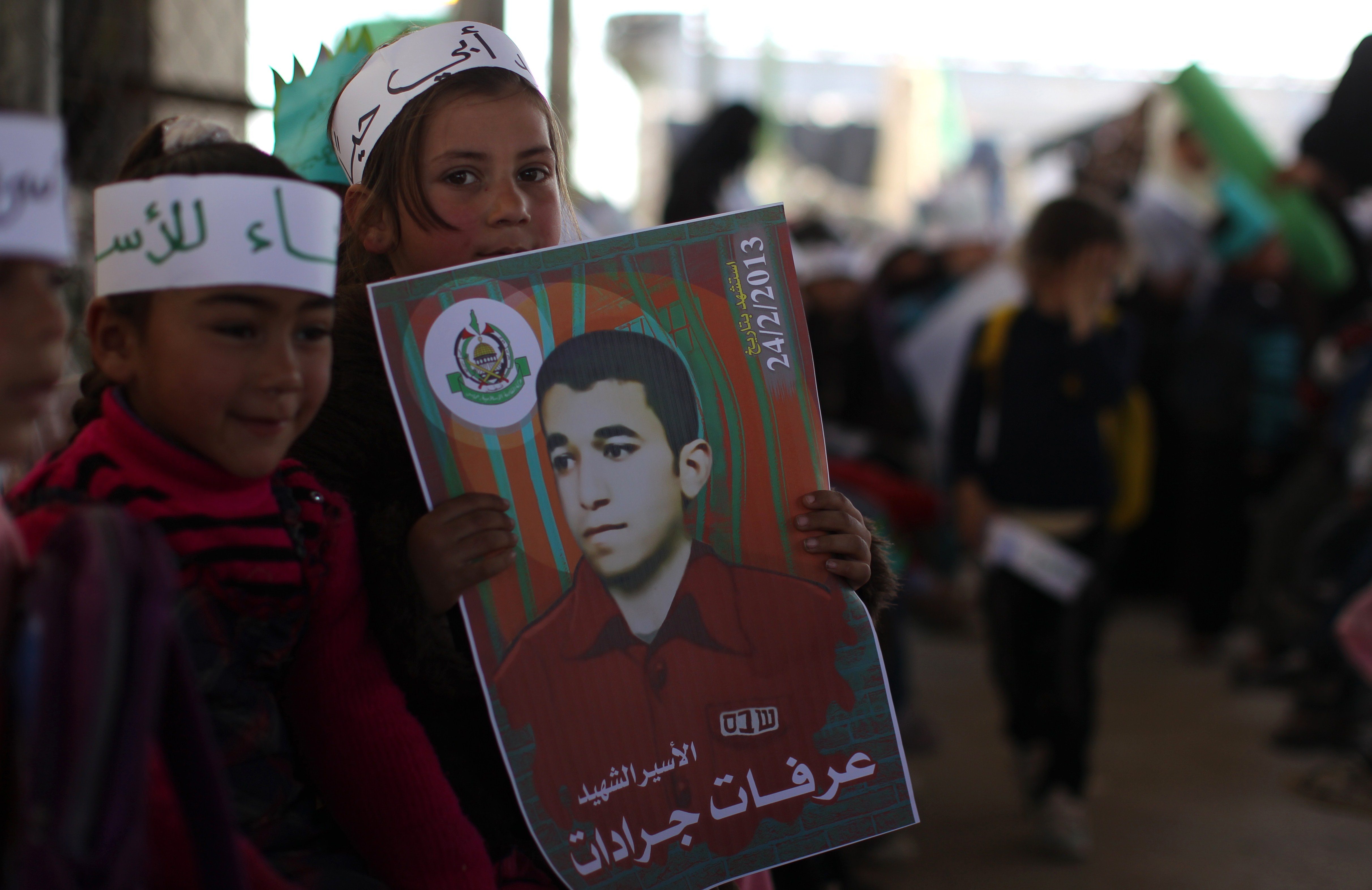
(AFP) – Gaza militants from Fatah’s Al-Aqsa Martyrs Brigades fired a rocket at Israel on Tuesday as a “preliminary response” after one of its members died in an Israeli jail.
It was the first time a Gaza rocket had struck southern Israel in more than three months, and stoked fears that the mass protests in the West Bank over the fate of prisoners in Israeli jails could spread to the Hamas-run territory.
Following weeks of anger in support of four prisoners on long-term hunger strike, the issue came to head on Saturday with news that 30-year-old Arafat Jaradat, who had been interrogated for throwing stones, had died in custody.
Jaradat was arrested on 18 February and questioned by Israel’s Shin Bet internal security services on suspicion of involvement in a “stone-throwing terror attack” in November.
Five days later, he died in Megiddo prison.
His death sparked angry demonstrations across the West Bank, with Palestinian prisoner affairs minister Issa Qaraqaa saying preliminary results from his autopsy showed he had died “as a result of torture.”
At his funeral near the southern city of Hebron on Monday, militants from Al-Aqsa Brigades, an armed offshoot of Palestinian president Mahmud Abbas’s Fatah party, vowed revenge.
The group claimed Tuesday’s rocket as a first response.
“In a preliminary response to the killing of our hero the prisoner Arafat Jaradat, we claim responsibility for firing a Grad rocket on Ashkelon at 6.00am (0400 GMT),” the Gaza branch said in a statement.
The rocket struck a road just south of the Israeli port city, causing damage but no injuries, police said.
Israeli public radio citing military officials said it was a “Grad M75.”
Sami Abu Zuhri, spokesman for Gaza’s Hamas rulers, said there was “no confirmation the rocket came from the Palestinian side,” and pointed the finger at Israel as being “responsible for the murder of Arafat Jaradat and all the consequences.”
Israeli President Shimon Peres said the Jewish state would consider an “appropriate response” to the rocket attack.
“The Palestinian Authority must understand that a return to violence would be a catastrophe and that is what its leaders also say,” he said. “We must act together to restore peace.”
It was the first such attack since the end of an eight-day confrontation in November during which militants fired more than a thousand rockets at Israel and the air force hit back with a major bombing campaign.
The violence, which killed 177 Palestinians and six Israelis, ended with a truce deal on 21 November.
Meanwhile, Palestinian police were preventing demonstrators from reaching an area near Jalame checkpoint in the northern West Bank where several mass protests have erupted into violence in the past 10 days, an AFP correspondent said.
Earlier, Abbas had instructed security forces to “maintain the calm” following a demand from Israel at the weekend that he act to cool the situation.
Washington also sent a “clear message” to both sides calling for calm, a State Department spokesman said, indicating it expected “all parties to consider the results of the autopsy calmly and without inflammatory rhetoric.”
And the United Nations called for an independent inquiry into Jaradat’s death.
“The United Nations expects the autopsy to be followed by an independent and transparent investigation into the circumstances of Mr Jaradat’s death, the results of which should be made public as soon as possible,” UN Middle East envoy Robert Serry said late on Monday.
The Palestinians also called for an independent inquiry in a letter from their UN ambassador Riyad Mansour to the UN Security Council, which said the autopsy showed Jaradat “was subjected to severe beatings, abuse and medical negligence during his captivity, possibly amounting to torture.”
According to the letter, the autopsy showed Jaradat had six broken bones in his neck, spine, arms and legs, as well as other injuries.
Israel has said the prisoner could have suffered broken bones during the attempts by the emergency services to resuscitate him.
It said the preliminary findings were “not sufficient to determine the cause of death” which could only be known with the results of microscopic and toxicological tests, which are reportedly due back on 10 days.




